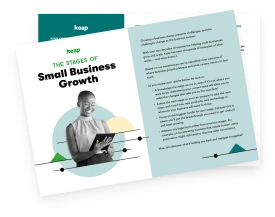Customer loyalty.
In a world with this many consumer options and so much competition, building customer loyalty is vital to your success as a small business owner. Without those die-hard and devoted customers, most small businesses will struggle to survive. The Internet is full of advice on exactly how you can find, win and keep that goldmine of a loyal customer base; there are already a million helpful blog posts on this very topic. So, why write another? Because it’s time to think outside of the box.
Read on for stories of five small businesses that went outside of the box, creating successful businesses, raving fans and loyal customers while marching to the beat of a different drummer.
Rule 1: Just say no
The reality of small business ownership is that you have to say yes. Frequently. However, when it comes to creating loyal customers, a solid “no” can be more powerful than a thousand half-hearted or insincere affirmative answers can ever be.
Lynn Jawitz of Florisan Wedding and Event Design in New York City is an award winning wedding and party florist. Because of her legal background, Lynn is cognizant of the potential ramifications of some client requests. High floral arrangements that tower off the table are hugely popular, but in Lynn’s eyes they are clearly risk -- a liability Lynn refuses to accept. She is willing to say no, and accept the loss of profits, when it comes to following her beliefs, insuring the safety of her clients and protecting her business. Rather than losing customers due to this refusal, Lynn has discovered that clients are truly receptive to her honesty and increasingly weary of vendors willing to sell at any cost.
I'm proud of the work that I have accomplished, and my clients know that with my years of experience behind me, they will get the straight truth from me, acceptable in popular culture or not.” –Lynn Jawitz, Florisan Wedding and Event Design
Rule 2: Something for nothing
What do you do when building trust for your main project is a difficult and time-consuming process? If you’re a part of Crew, a worldwide community of handpicked, quality freelance developers and designers, you break the mold entirely. The founders of Crew knew that online trust can be hard won, especially in a world where low-quality freelance websites are increasingly popular and negative experiences run rampant. To counter the low-quality perception, they decided to stake their entire business on changing that reputation in both traditional and non-traditional ways.
We’ve used the traditional ways of building trust—a high-quality product, solid social proof, good design, customer reviews, a strong brand, and success stories, but to be really successful we’ve had to find additional ways to build that trust a lot more quickly.” –Luke Chesser: Design and Development, Crew
Launching a number of high-quality side projects in conjunction with Crew and making them available for free gives a unique spin on the ‘try before you buy’ mentality. Prospective clients can experience for themselves the caliber of work, commitment to 24/7 support and dedication to quality. Unsplash, one of the successful side projects, is a completely royalty, restriction and license free photo site. After struggling to find nonstock-looking images to use on their own site, the Crew team took matters into their own hands, hiring a photographer to shoot some photos at a local coffee shop. One of the photos was used for the homepage and the others were released as a set, with no restrictions on how they were used. The response was unexpectedly huge, shot to No. 1 on Hacker News, Designer News and Sidebar and completely overwhelmed the bandwidth of their original delivery system. No amount of old-fashioned effort could have provided the exposure and loyal following that Unsplash created without even trying. As a result of their efforts, Crew’s average project budget has consistently grown and now stands at over $10,000 USD per project. Their completely transparent blog further aids trust building and the company currently has a strong following of loyal customers and freelancers supporting their efforts.
Rule 3: Go out on a (green) limb
When a topic matters deeply to you, it will inevitably filter its way into your business or your life. As a small business owner, you may sometimes feel that you should keep the two separate. Sometimes the exact opposite is true. In reality, being vocal about your passions and allowing your deeply held beliefs to guide your business can lead you in the direction of authentic success. This was the case for Ethical Marketing Expert Shel Horowitz of Green and Profitable.
In 2002—when this was still a radical idea—Horowitz began to speak very openly about how green and ethical business practices could be an ingredient, instead of a barrier, to business success. Instead of separating his marketing work from his activism, he chose take a risk and integrate the two.
As I got to be more and more public and outspoken on these topics, I very quickly started attracting better, longer-term, and more lucrative clients, several of whom have said with certainty that my stance on business ethics and green business led them to work with me—even if that work was unrelated to those topics.” –Shel Horowitz
Despite encountering plenty of skepticism along the way, Howowitz was able to point to successful business examples and profitable companies that have benefited by growing green, even when profit is the driving motivator. Walmart, for example, single-handedly doubled the organic food market—providing ample proof that even when dollars are the bottom line, going green can make good business sense.
Rule 4: Give ‘em the shirt off your back
Allow your customers to set their own prices? That’s crazy talk. Given the opportunity, prospective customers will always place low-ball offers, costing you profits and sustainable operation. Won’t they? Except maybe they won’t. Just maybe, given enough information and trust, your customers will surprise you with their willingness to offer what you need, and even more. The Singapore-based company 3tees embraces such an unconventional pricing model. The company serves organizations that are promoting events with a social cause and have managed to be profitable, building a loyal customer base within their ideal market and helping these social causes save on costs.
Our marketing campaigns revolve around our slogan of "You price it. We print it." We go directly to our prospective clients (the social and volunteer organizations) and instead of giving them name cards, we give them our cotton tees. This is to show that while we are cheaper, our quality is also fantastic.” –Benjamin Chua, 3tees
3Tees practices what they preach, promoting social good by hiring underserved populations to help with delivery and being flexible with profit-margin in order to further the social causes of their customers. Providing a quality sample even before it is requested builds the brands value and trust perception, so that by the time a prospective customer places a bid they fully understand the quality and commitment 3tees offers. 3tees also helps promote their customers’ social cause, and, when possible, even attends the events and offers direct social support. By creating a positive rapport, leading by example and promoting goodwill, people are highly unlikely to take advantage of the unique pricing model. The vast majority make genuine offers that both fit within budget and provide an acceptable profit margin. In fact, while the company is willing to reject extreme low-ball offers, they have discovered that only 5 percent of total bids fit within this category. Entrepreneur, author, and in-demand speaker Danielle LaPorte also embraced this paradigm and launched an online digital product trend when she held her first Pay What You Can Day, on her birthday in May of 2009. Her success provided more than good karma - it also resulted in profits, with over 700 e-books sold that first day. In the years since, Danielle has repeated her offering, shared the rewards of the system and inspired many other online entrepreneurs to do the same.
Rule 5: Live on the edge
The vast majority of small businesses play it safe: sticking within the standard paradigm and religiously coloring inside the lines. This leaves the market wide open for your small business to embrace a more off-the-wall approach and inject color and personality into your brand. San Francisco-based CLASH Scavenger Hunts has done just that in the traditionally uncreative niche of corporate off-sites. The website promises that they provide “team building that doesn’t suck” and the company delivers exactly that by “taking corporate culture to the streets, putting and drink it its hand and letting it get a little frisky.”
Intrigued? So were CLASH clients Facebook, Google, Sony, and Yelp. Instead of sticking teams in a generic boardroom, completing stale team-building exercises and watching yet another PowerPoint, CLASH tests boundaries and pushes limits, maintaining an edge in a way that separates them from competition and is appreciated in the corporate world. CLASH realizes that people love working with companies that have a clear sense of self, and work hard to maintain their differences in a sea of competition, creating events that don't feel corporate or contrived. Their signature experience takes clients out of the corporate world and immerses them in a totally different experience.
No one ever got to know more about their coworkers after doing a trust fall and that's why our clients keep coming back to us. We make it possible to create memories with your coworkers that you're definitely going to remember and that you'll actually enjoy making.” –Joe Garvey: Founder, CLASH Scavenger Hunts
Garvey says that one of the biggest challenges is pushing boundaries without crossing a line; moving people out of their comfort zones without making them feel uncomfortable. Creating an environment where ideas are constantly shared and weighing the pros and cons of their next bold move helps them stay in touch with company culture and the needs of the market.
Bottom line: Do it your way
One of the biggest bonuses of small business ownership is the freedom. You have the flexibility to think outside the box, experiment with different approaches and take risks to see what might work. Don’t be afraid to let go of the status quo and let your imagination run wild. Could your business benefit from an injection of off-the-wall personality or a slice of good karma, sprinkled with a side of passion? Could you try a different pricing model or bring your passions to the forefront in an entirely new way? Think of the businesses you know of who do things a little differently.


